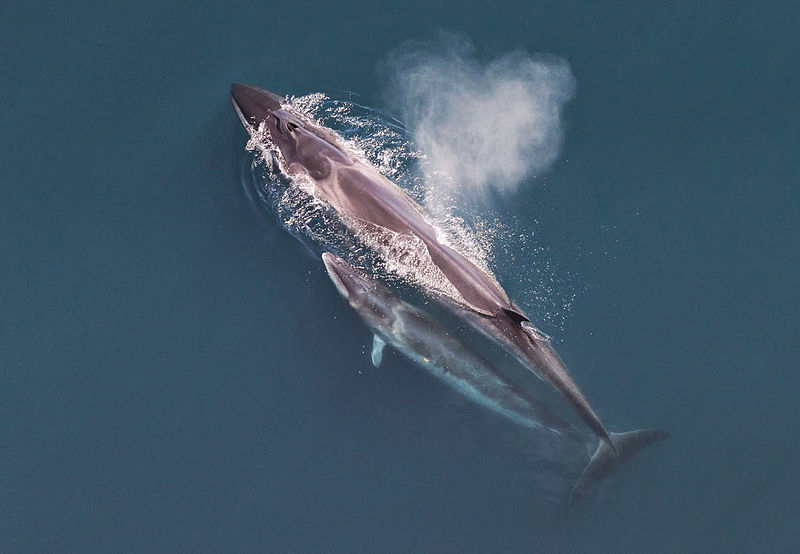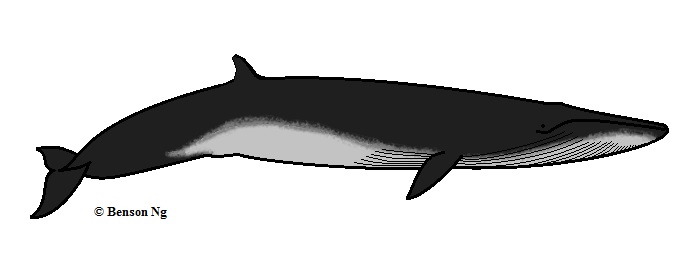The Sei whale is a Baleen whale in the Rorqual group. It is the third-largest in this group, after the Blue and Fin whales. This whale is found throughout the world, inhabiting most of the adjoining oceans and seas, avoiding polar and tropical waters and semi-enclosed bodies of water. The Sei whale migrates annually from cool subpolar waters in summer, to temperate subtropical waters in winter. It is now internationally protected, after extensive commercial whaling in the late 19th and 20th centuries, although limited hunting occurs under a controversial Japanese research program.
As a Baleen whale, the Sei whale diet consists primarily of copepods, krill and other zooplankton, consuming up to 900 kg (2000 lb) a day. It can reach up to 19.5 m (64 ft) in length, weighing as much as 28 tons. This whale is amongst the fastest of all Cetaceans, known to travel up to 50 km/h (27 knots) over short distances. The whale’s body is typically a dark steel grey with light grey to white markings on the front of the lower body, and often it is marked by pits or wounds which subsequently become white scars. Whilst previously a mystery, these scars were found to be caused by a species of small dogfish, known as the cookiecutter shark. The Sei whales’ very fine baleen bristles, only around 0.1 mm in diameter, are the most reliable characteristic for classification.
Little is known about the social habits of Sei whales. Sei’s usually travel alone, or in pods of up to six individuals. They have been seen milling in specific areas occasionally with larger groups occasionally assembling at particularly abundant feeding grounds. Despite its quick speed, the Sei whale is not an especially strong diver, reaching relatively shallow depths for 5 to 15 minutes at a time. Between dives, they often surface for a few minutes, remaining visible in clear calm waters just under the surface. The blowholes and dorsal fins are often exposed above the water surface simultaneously, but it rarely lifts its flukes.
Sei Whale – Balaenoptera borealis specifics
Length:
19.5 m (64 ft)
Weight:
28,000 kg (62,000 lb)
Colour:
Steel grey
Features:
Very pointed head with one ridge running from the tip of the head to the blowholes
Short, pointed pectoral fins
Curved dorsal fin
Multiple white circular scars on the body, caused by cookiecutter shark bites





